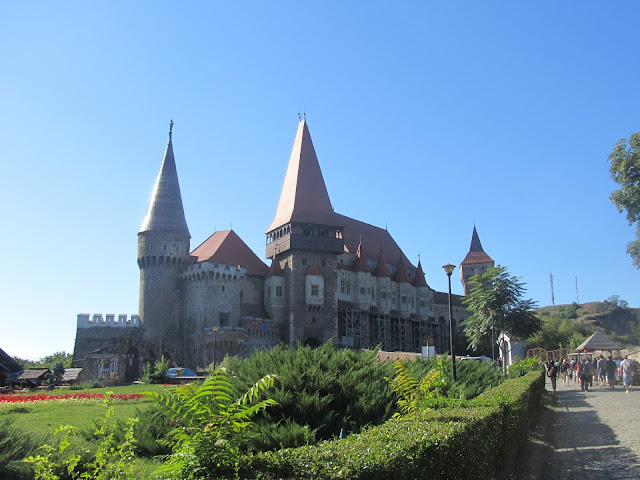On the third weekend of the project, the group
had an excursion to two of the most important historical sites of the region –
to the Hunedoara/Vajdahunyad Castle and to the ruins of the Roman settlement
Colonia Ulpia Traiana Sarmizegetusa. The Hunedoara Castle is a late
Gothic-Renaissance style castle which was mainly built in the second half of
the 15th century. Its construction was started by Jancu de
Hunedoara/János Hunyadi, the famous governor and the father of King Matia
Corvin/Mátyás Hunyadi who was one of the most prominent rulers of medieval
Hungary.
Colonia Ulpia Traiana Sarmizegetusa was perhaps
the most important settlement of Roman Dacia. It was founded right after the
conquest of Dacia by the orders of Emperor Traianus, as it is attested by an
inscription: Auspiciis / [Imp(eratoris)]
Caes(aris) divi Nervae f[il(ii)] / [Nervae] Traiani Augusti / [Germ(anici)
Dac(ici)] condita colonia / [Ulpia Traiana Augusta] Dacica / [Sarmizegetusa]
per / [D(ecimum) Terenti]um Scaurianum / [legatum] eius pro pr(aetore) /
[------? (Translation: “By the orders of Imperator Caesar Nerva Traianus
Augustus Germanicus Dacicus, son of the divine Nerva, the colony of Ulpia
Traiana Augusta Dacica Sarmizegetusa was settled by Decimus Terentius
Scaurianus, his governor.”) The settlement was the seat of the financial procurator of Dacia, and the concilium provinciae (a religious
festivity in honour of Rome and the Emperor) was also held in the city
annually.




No comments:
Post a Comment